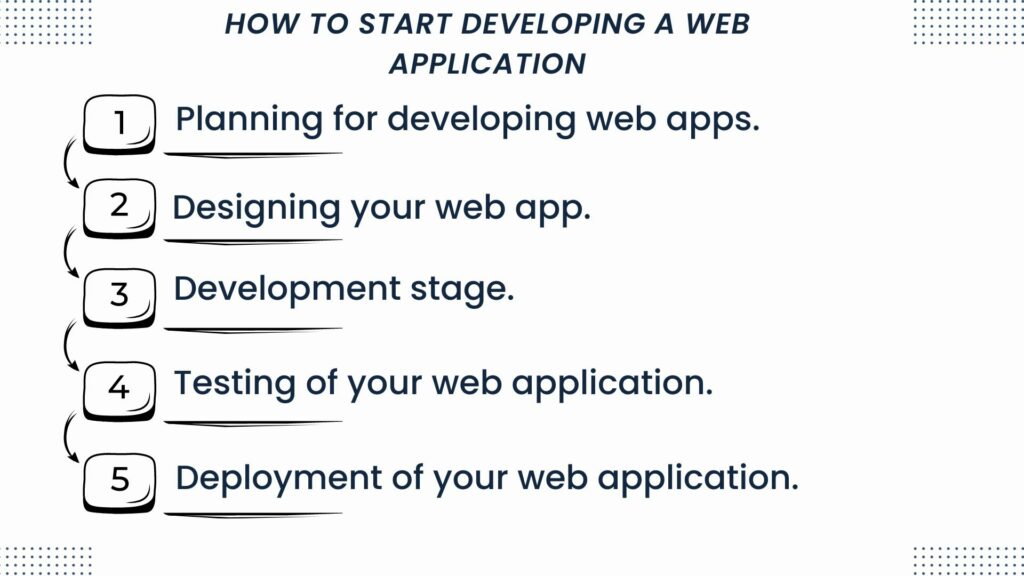Web applications have come a long way to stand as a competitive program to mobile applications. They can be easily opened through internet browsers and deduct the hassle of downloading. This has led to a growing trend in web application development, especially for businesses and organisations that need a directly accessible online interaction platform.
Naturally, any platform that can be reached easily is opened more often. That is where the concept of web apps booms. So here are some benefits of a web application that will help you understand why it might be the missing piece of your business.
- Easy access. Web apps can be opened in any digital environment with the internet. This includes all OS and any internet browser.
- Ideal interaction platforms. Unlike static websites, a web application is dynamic; it allows the user to interact by viewing, creating, updating and communicating based on the services or content of your app.
- Efficient to use. Users can simply enter the URL and use the web app as they sit in the web browser. This makes an easy entrance doorway and creates an efficient environment to come to any time through any device.
- Scalable. No matter the size of your business, the audiences you wish to reach, or the inconsistency of what you need now, varying from what you might need, web applications are extremely flexible regarding future changes and updates.
- No hassle of installing. One of the main benefits of a web application is the reduced hassle of downloading and installing the app on your device. It doesn’t take up any storage space in your device.
- Simple deployment process. Web applications can easily be put up and shared. For example, they sit on a web browser that can be accessed through any internet connection.
Web application development refers to building a computer program for your business in the web browser where your clients and customers can directly view and interact with you in the comfort of their internet browser. It creates a platform for a dynamic online presence that can reach a large spectrum of audiences. For example, a web app developer is an individual or a company who works to build the front-end (creating the visual elements) and back-end (creating the functionality and logic behind it) of your web application with the help of different tools and technologies.
Web app development can easily be learnt as well. For starters, there are hundreds of free tutorials for learning frameworks and technologies you will need. With a basic understanding of concepts and a guide to walk you through the nuts and bolts of coding for content, style and adding a dynamic element to your app, you can easily build your own web application with endless creative freedom and opportunity to reflect your business and its services best in it.
What is a web application?
A web application is a computer program that is opened through a web browser. It is interactive and allows users to view, create, and update, often signing in or logging in to the application. It is dynamic in nature and is used by businesses and organisations to build an online presence. A web app is built with different web technologies and requires a database server.
Web Applications vs Websites
While web apps and websites fall under the same umbrella of being accessible via browsers, notable differences make them two separate programs.
Websites are static; their primary purpose is to let users view certain information online. It acts as a read-only interface. There is no two-way interaction. Many blog sites, portfolio sites, and informational platforms come under websites as the user is not entering any additional data into the database. On the other hand, web apps, as explained above, are dynamic.
The most common examples of web applications are social networking platforms (like Facebook, YouTube, and Twitter), e-commerce sites (like Amazon and Shopify), or word-processing sites (like Google Docs).
Let’s take Facebook, for instance, one of the most popular places on the web browser, and that can be opened in any internet browser. It allows users to interact by posting statuses, uploading images, chatting with friends and all that. This is possible through its dynamic nature.
Role of Web Application Development in The Digital Economy
Having an efficient online presence can do wonders for the economy of your business or organisation. With a web application, you are putting out your services or products digitally and creating a convenient opportunity for digital marketing.
Your company is remotely making itself available to a whole new range of audiences much larger than what was available in the physical market. You can design your web app in a way that highlights all features and has a comfortable UI to put out the services you provide. Having such a luxury in the comfort of your audiences’ own devices, your company will incline towards more engagement, eventually leading to more business.
It is important to acknowledge, however, developing web apps is no walk in the park. You need a professional team who can get a grip on your needs and expectations to achieve. If you are self-learning, you need a deep dive into how you can execute a program to make an ideal application for your business. Your web app will require constant care when it comes to maintenance and updates.
If you manage to get through to establish a standard performance and speed reputation, you will have a flexible platform to work towards extending your services based on market trends. Developing web apps will fill the communication gap between you and your customer, constructing stronger customer support and an efficient medium to incorporate feedback quickly.
Prerequisites for learning Web App Development
There are certain things you need to know before developing your web app.
- Concept of web technologies
When developing a web application, you need a basic understanding of web technologies like HTML (HyperText Markup Language), CSS (Cascading Style Sheets), and Javascript. HTML will help you structure the application’s content, from arranging your headings to organising. CSS is a style sheet language that will assist you in styling your app, from colour choices to image designs. At the same time, Javascript is used to make the web application more dynamic for the users to interact with it through graphics.
There are tons of free online sites where you can find basic tutorials to familiarise yourself with and work with these three web technologies.
- Understand server-side language
PHP, aka Hypertext Preprocessor, is a server-side scripting language that can help you create dynamic page content. This includes creating files, opening them, reading them, and being able to write, edit, close or delete. While enhancing the dynamic nature of your web app, it also controls user accessibility and supports data encryption and cookies, making the process much more efficient and effortless.
Python is a high-level programming language that can be used in small-scale and large-scale web app development. It is object-oriented programming, as the program is structured into simple and reusable blueprints. It is an ideal language for web app developers because of its diversity and quality to support different languages and frameworks.
- Code Editors
Code editors are modern tools designed for coding. It comprises features like different coloured syntax highlighting, indentation, auto-completion, and language translators like compilers or interpreters, with many plugins to give a comfortable environment for developing web apps.
How to start developing a web application
Now that you are equipped with everything you need and the basic technologies you need to understand, it is time to start how to program an app. Here is a detailed step-by-step guide to starting your project.

Step 1: Planning for developing web apps.
You need to set up an environment that caters to everything you need to develop a web app. First, your device needs a local web server and a database server. As you type out your codes in the code editor, it needs a platform to be hosted so you can get an idea of how it performs. For example, a local web server will provide an address where the app can be hosted locally and accessible to your computer. Similarly, all the data stored and entered into the web app needs a space to sit, aka, a database server. A database server is a machine running software that stores a web app’s data.
Step 2: Designing your web app
The second step is moving toward creating a basic web application structure. In the beginning, the basic content outline of your program can be done using HTML. This is when you format texts, place headings and subheadings, and put up paragraphs, product names, images, etc.
Next, it is time to experiment with different text styling techniques and the selection of shades with the help of CSS. This is an opportunity to blend your web app with the theme of your business or organisation. There are endless possibilities and creative freedom to work with what works best for the content and services.
The front-end and back-end should be structured and designed accordingly based on your needs and the quantity of information and style that best suits the type of web app you are building. Often, the front end is where the user’s attention is grabbed with an attractive and easy-to-use user interface. While the back end is where you put up quality content and information, everything your user is looking for in the web app. You can work with different categories and sections to enhance the experience and better organise your site.
Step 3: Development stage
During the development stage, you make your web application interactive for the users. Until now, you have been working on structuring and putting out a web application, achieving all the static nature where you have content in your app. For it to interact, it needs a dynamic nature. The real programming starts now.
Dynamic functionality can include something as simple as a pop-up information box where the user can select ‘Ok’ or ‘Cancel’ or create an entire content or file in your web app to achieve their task. Let’s bring back the example of Facebook. The ability to upload status is dynamic as the programming runs from both ways (dynamically) as the user interacts with the application to create data.
Web technologies like Javascript or server-side languages like PHP or Python are used to achieve this. At this stage, you are graphically developing an interactive element for your web app and working with logic and strategies to enable users to perform certain tasks. You can experiment with different dynamic designs to develop the most productive outline based on the needs of your business. This is the most time-consuming and difficult part of the process, but the most important one indeed.
Step 4: Testing of your web application
At this stage, you are testing whether your program is being executed properly or not. First of all, is your program being executed? Your code editor will help you identify coding errors and allow you to correct them.
Then comes the identification of errors in the executed program. When you host it to the local web server, is the application what you initially intended for it to look or function? Are there any places with possible mistakes that can improve presentation or functionality? While the testing process might look simple from the surface, this stage is also time-consuming and requires a lot of work to debug. It is also important to enhance your end product and bring out the best web app version through consistent testing and improvements.
Step 5: Deployment of your web application
After all, the most exciting part of the process is the hard work and patience; in this stage, you make your web app accessible to the users. You must host the application on the web server. Many tools are available to help you with this, like Vercel, Heroku, and many more. As your app is on the web server, you can easily share it via URL to help users observe and interact with how the app is built and provide you with feedback. This is an important step to test it among users before officially launching it.
Tips for successful web application development
When working on a web application development project, creating a user-friendly, easy-to-use, productive and effective application is crucial. Here are some tips to help you build a successful web application:

- Make your application simple. To establish a user-friendly interface, you need a simple and easy-to-use application that can be understood and used by all.
- Test your app. It is necessary to see how your application executes to ensure you are doing the codes right and that the program is being executed and functioning properly.
- Address and incorporate feedback. As you deploy your web app, you must share the URL with multiple users. Their experience is significant as they use it to ensure your app is user-friendly. As a developer, you might not drive attention to certain details.
- Fixing over-time bugs and errors. Users can experience different errors and bugs over time, even after launching your web app. It is important to address and debug such errors as soon as they come to your knowledge.
- Utilise free tools. If you are developing it yourself, starting with free tools will save you from the overwhelming complexities of purchasing them. Lucky for you, tons of free code editors and deployment tools provide quality and free services. As a beginner, they can be a saviour to your budget, and you can upgrade to more advanced tools as your web app starts making profits.
- Invest in the right developers. If you are thinking of hiring web app developers instead, invest in quality rather than comfortable prices. Cheap developing services can seem enticing at the beginning but might fail to meet your expectations. This can lead to much higher costs in improving the app during the later stages. Instead, look for experienced, quality professionals to work for your web app.
- Spend more time and devotion to learning. There are hundreds of free resources you can find online to gain a basic understanding of the technologies and tools and tutorials for programming. Mozilla offers a detailed definition and understanding of all the basic concepts and factors you need when developing a web app. Generation Australia also offers online courses. You can also find more options and depth knowledge about web app designing by enrolling on one of the courses Skill Finders provides.
Conclusion:
When you are thinking about developing a web application for your business or organisation, your initial goals and expectations can help you follow the steps needed to develop an end product that serves your company’s purpose well. You can start with learning basic concepts of tools and technologies used and dive deeper into tutorials and practice of full-stack web development. Dedication and patience will help you meet your expectations well. You need to be mindful of testing and improvising the app to give the best and most user-friendly app out there.
If you are looking for expert web development services, we can help you bring your vision to life. Contact Wolfmatrix to learn more.
Frequently Asked Questions:
What is better: Multi-page Website or a Single-page Website?
A single-page website is more suited if you have lesser and lighter information and features that can comfortably fit on one page of the website. It is more convenient in browsers opened with mobile phones. While a multi-page website can help you categorise and organise multiple information, sections and services of your website. This is ideal if you have heavier content and the user benefits from the detailed information and features.
Which language is best for web applications?
The best languages for web applications are HTML, CSS, Javascript, PHP and Python, from structuring and styling to adding functionality. Combined, you can build a dynamic app with a user-friendly interface easily.
Is web development a hard career?
While it can be overwhelming, web development is easy if you are devoted to learning and open to solving logic. Anyone can become a web app developer with a basic understanding of how a web app works, the tools needed to build it, and the ability to break down complex functions and logic to solve complex problems.
How can I find and hire a qualified web application developer in Australia?
To find a qualified developer in Australia, you need a company with professionals and a strong portfolio. Looking into their previous works, reputations, and end-products will help you observe if they can build the type of app ideal for your company. This can also depend on your budget and the quality of developers needed to achieve your web app goals.
What are the fundamental concepts and principles of web application development that I need to understand?
You need to be familiar with fundamental concepts and principles of web application development like understanding the client-server model, the structure of web browsers and web servers and how they function. Similarly, you need to understand HTML and CSS for creating web pages and JavaScript to make the app function dynamically. For server-side logic, you must understand programming languages such as JavaScript, Python, PHP, or Ruby. Web standards, ideal UI/UX, and responsive design are other important principles to take into consideration when building a web app.
What are some popular tools and technologies used in web application development?
The most popular web technologies for web app development are HTML, CSS, Javascript, PHP, Python, MySQL, SQLite, etc. The most popular tools are Visual Studio Code, Apache, Nginx, Heroku, Vercel, Netlify, etc.
How can I improve my web application development skills and stay up-to-date with industry trends?
You can look into the design and features of other web applications similar to the one you are starting to develop. This can evoke inspiration, giving you a better idea of how to go with your project. In addition, there are hundreds of resources available online to observe the trends and ever-changing technologies and tools that best suit your developing process.

Passionate engineer who loves talking about Machine learning and ways to improve Software development practices. CEO and Director of Software Engineering of Wolfmatrix.

